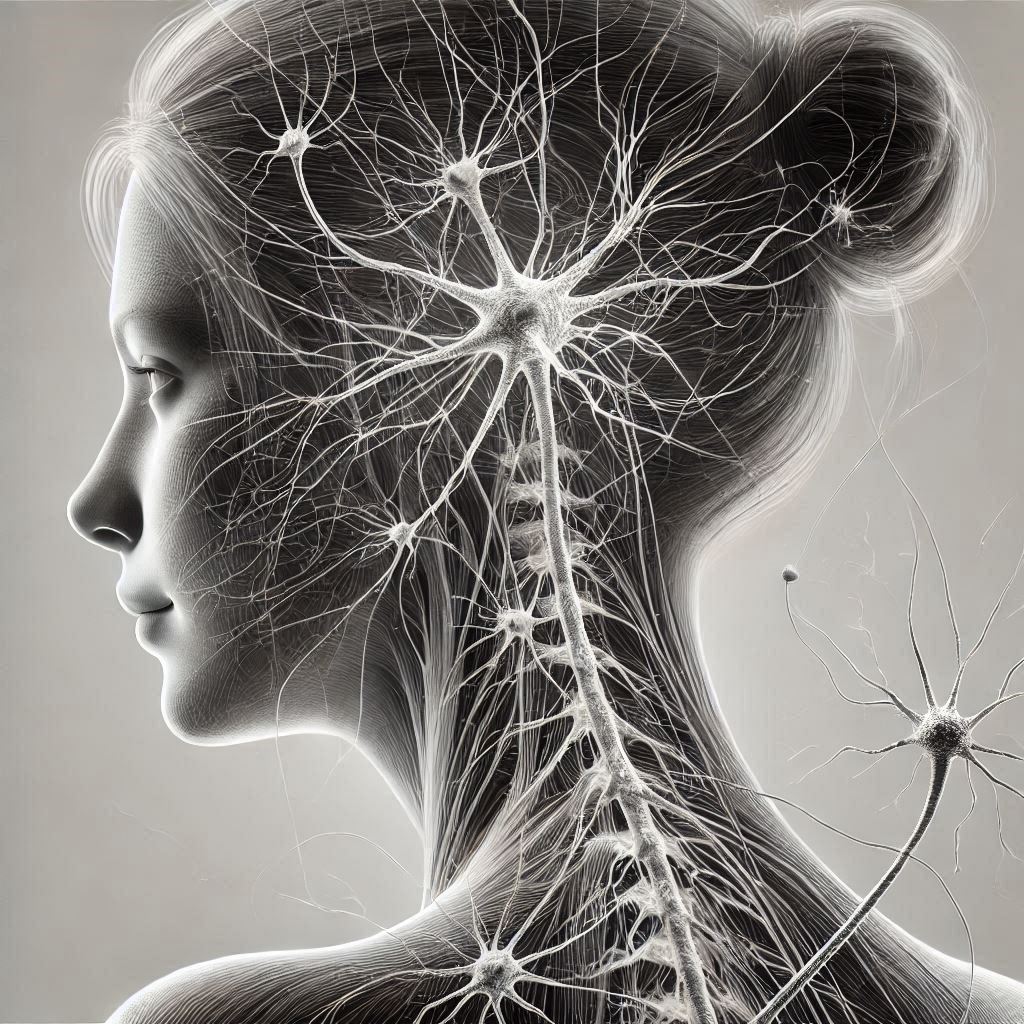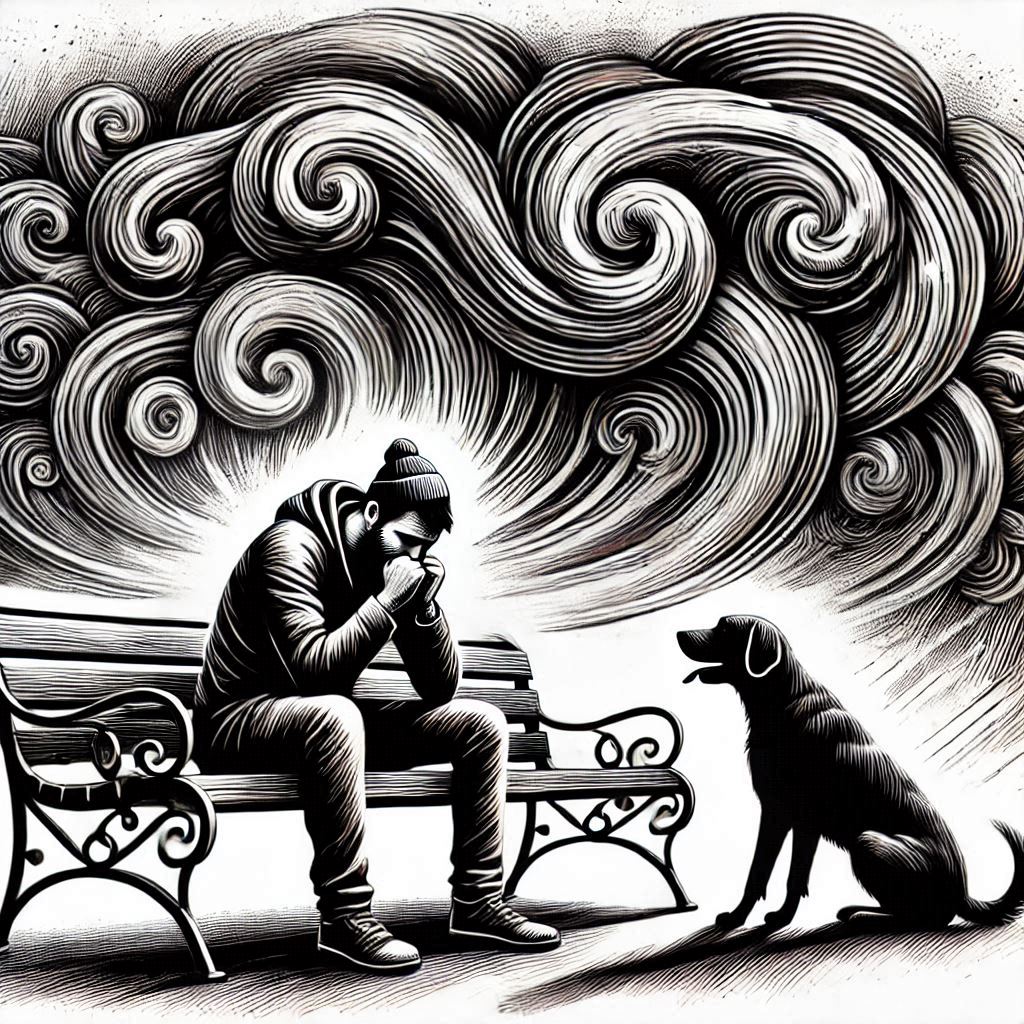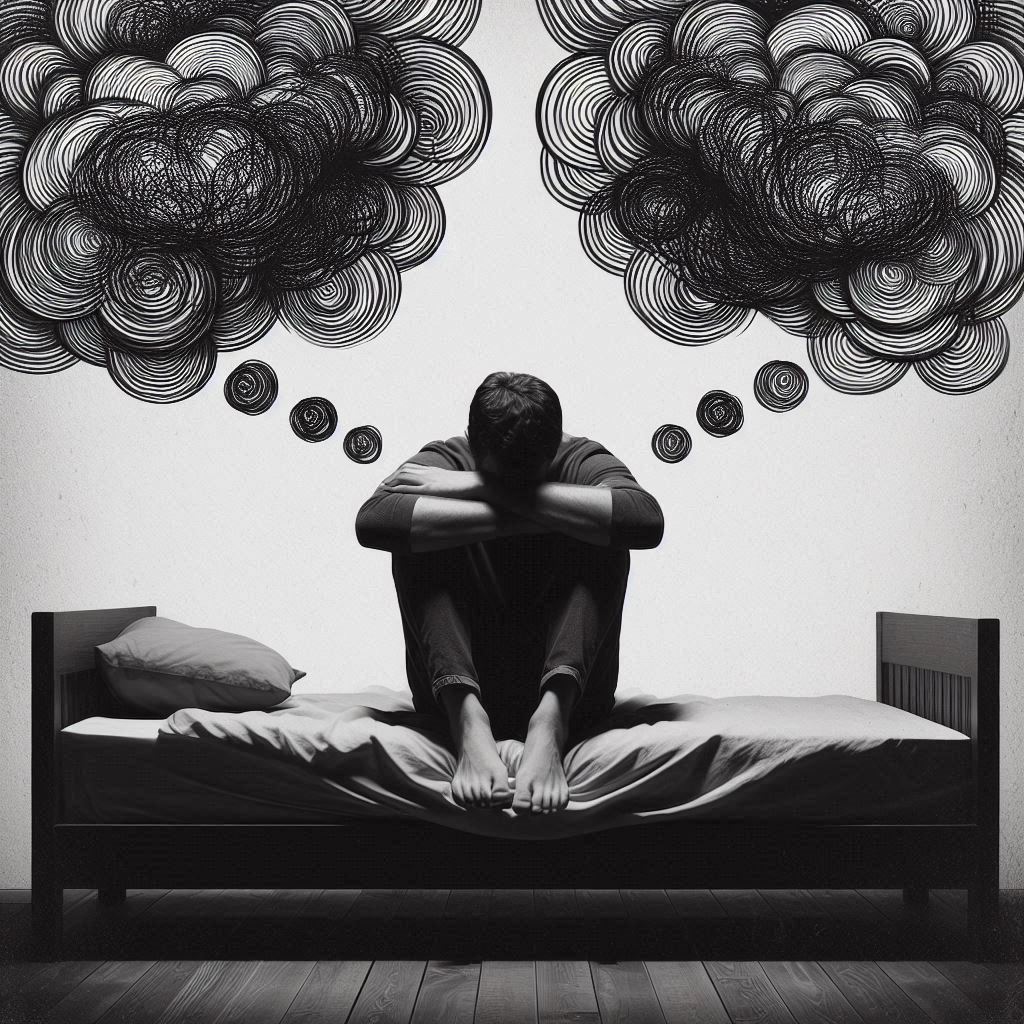Ever had your heart race uncontrollably, palms sweat, and felt an overwhelming sense of doom? Panic attacks are nothing short of terrifying. Now, imagine your blood pressure hitting 180 during one of these episodes. Sounds alarming, right? But is it something you should worry about?
In this post, we’ll explore how panic attacks affect blood pressure, why it matters if it hits 180, and what steps you should take to manage these intense episodes. Stay with us as we navigate this urgent health topic.
What is a Panic Attack?
A panic attack is an episode of sudden and intense fear that can be incredibly overwhelming. These attacks often come without warning and can make the person feel like they are losing control. This section will break down what a panic attack is and the common symptoms people may experience.
Definition of a Panic Attack
A panic attack is a sudden surge of intense fear or discomfort that peaks within minutes. Imagine being completely fine one moment and then feeling as if something terrible is about to happen. That’s what a panic attack feels like.
Common Symptoms
During a panic attack, several symptoms can manifest, some of which might make you feel like you’re having a heart attack. Common symptoms include:
- Rapid heart rate: Your heart might feel like it’s pounding out of your chest.
- Sweating: Even in a cool environment, you might start sweating profusely.
- Shaking or trembling: Your hands or body may shake uncontrollably.
- Shortness of breath: It can feel like you can’t catch your breath, making you feel even more panicked.
- Chest pain: This can be especially frightening and make you think you’re having a heart attack.
- Nausea: You might feel sick to your stomach or even vomit.
- Dizziness: Feeling light-headed or faint is also common.
- Fear of losing control: You might feel like you’re going crazy or losing control of yourself.
Psychological Symptoms
Apart from physical symptoms, panic attacks also come with a range of psychological symptoms:
- Sense of impending doom: You might feel like something really bad is about to happen.
- Fear of death: The intense physical symptoms can make you feel like you might die.
- Detachment from reality: Some people describe feeling detached from themselves or the world around them.
Why They Occur
Panic attacks can happen for a variety of reasons. Sometimes, they are triggered by specific situations, but other times they come out of nowhere. Factors like stress, genetics, and certain changes in brain function can contribute to their occurrence.
Understanding panic attacks can help you manage them better if they happen to you or someone you know.
Blood Pressure Basics
Understanding blood pressure is essential for managing your health. Blood pressure tells us how hard your blood is pushing against your blood vessels as it moves through your body. This reading can give doctors clues about how your heart and blood vessels are doing. Let’s break down the basics.
What Is Blood Pressure?
Blood pressure is the force of the blood pushing against the walls of your arteries. Every time your heart beats, it pumps blood into your arteries. If your blood pressure is too high, it can cause problems for your heart and other parts of your body.
The Two Numbers: Systolic and Diastolic
Blood pressure readings consist of two numbers:
- Systolic Pressure: This is the top number in your reading. It measures the pressure in your arteries when your heart beats. Think of it as the peak pressure your heart pumps out each time.
- Diastolic Pressure: This is the bottom number. It measures the pressure in your arteries when your heart rests between beats. This tells you how relaxed your arteries are.
For example, a blood pressure reading might be written as 120/80 mm Hg. This means a systolic pressure of 120 and a diastolic pressure of 80.
What Do These Numbers Mean?
Here’s a simple guide to what these numbers mean:
- Normal: Systolic less than 120 and diastolic less than 80
- Elevated: Systolic 120-129 and diastolic less than 80
- High Blood Pressure (Hypertension) Stage 1: Systolic 130-139 or diastolic 80-89
- High Blood Pressure (Hypertension) Stage 2: Systolic 140 or higher or diastolic 90 or higher
- Hypertensive Crisis: Systolic over 180 and/or diastolic over 120 (This requires immediate medical attention)
Why Monitoring Blood Pressure Matters
Keeping track of your blood pressure is crucial because high blood pressure often has no symptoms. It’s known as the “silent killer” because it can cause serious health problems like heart disease and stroke, often without warnings. Regular monitoring can help you catch problems early and manage your health proactively.
Tips for Measuring Blood Pressure
Here are some tips to get an accurate blood pressure reading:
- Sit quietly: Rest for 5 minutes before measuring.
- Position: Keep your arm at heart level.
- Frequency: Measure at the same time each day.
- Equipment: Use a validated blood pressure monitor.
Understanding how to read and interpret blood pressure can help you stay on top of your health. Regular check-ups and monitoring can make a big difference in keeping you healthy and preventing issues down the road.
The Connection Between Panic Attacks and Blood Pressure
When you have a panic attack, your body goes through many changes. These changes can affect your heart rate and blood pressure. Understanding these changes can help you see why your blood pressure may spike during a panic attack.
Physiological Changes During a Panic Attack
During a panic attack, your body thinks it’s in danger, even if there is no real threat. It’s like your body hits the panic button. Here’s what happens:
- Adrenaline Release: The body releases adrenaline, also known as the “fight or flight” hormone. This hormone prepares you to react quickly.
- Increased Heart Rate: Your heart starts to beat faster to pump more blood to your muscles, getting you ready to either fight or run away.
- Heavy Breathing: You start to breathe faster, which can cause dizziness and a feeling of tightness in your chest.
These changes are part of your body’s natural response to stress. However, they do cause your blood pressure to rise temporarily. It’s like how a car’s engine revs up when you press the gas pedal.
Short-term vs Long-term Effects
It’s important to know that a panic attack can cause a short-term spike in blood pressure. But what does that mean for your health in the long run?
- Short-term Effects: During a panic attack, your blood pressure can shoot up. This is a temporary reaction and usually goes back to normal once the panic attack is over. The temporary rise in blood pressure is like a rollercoaster – it goes up fast but comes down just as quickly.
- Long-term Effects: If you have frequent panic attacks or chronic anxiety, it could potentially lead to long-term high blood pressure, also known as hypertension. This is because your body is constantly in a state of stress. Over time, this constant stress can damage your blood vessels and heart, making it harder for your body to manage blood pressure.
Understanding these effects can help you manage your anxiety better. It also shows why it’s important to seek help if you have frequent panic attacks. Taking care of your mental health is also taking care of your heart.
When Blood Pressure Reaches 180
Experiencing a blood pressure reading of 180 or higher is a red alert for your health. Imagine your body’s pipes under extreme pressure; if not addressed, they can burst. This section will walk you through what it means and why immediate action is crucial.
Hypertensive Crisis Explained
A hypertensive crisis occurs when blood pressure reaches 180/120 millimeters of mercury or higher. This situation is not just serious—it’s an emergency. When your blood vessels are subjected to such high pressure, it can lead to life-threatening conditions like stroke, heart attack, or organ damage.
Your body is like a finely-tuned machine, and blood pressure is a key indicator of how well it’s functioning. When the readings go through the roof, the stress on your heart and blood vessels is immense. Getting medical help swiftly is not just important; it’s vital.
Symptoms to Watch For
Don’t wait for things to get out of control. Here are some symptoms that can accompany seriously high blood pressure, signaling you need immediate medical help:
- Severe headache: This isn’t your average headache; it feels like a migraine on steroids.
- Chest pain: Often mistaken for heartburn, but this could be your heart screaming for help.
- Shortness of breath: Imagine trying to breathe through a straw.
- Nausea and vomiting: Your body’s way of telling you something’s horribly wrong.
- Blurred vision: When your vision gets fuzzy, it’s a sign your eyes are straining under high pressure.
- Nosebleeds: Sudden and severe, not your typical nosebleed.
- Anxiety: Unexplainable, intense feelings of doom can also be a red flag.
If you experience any of these symptoms along with a high blood pressure reading, head to the emergency room immediately. It’s better to be safe and let professionals determine the severity of your condition.
Management Strategies for Panic Attacks
Managing panic attacks doesn’t have to feel overwhelming. By using a few effective strategies, you can help control your anxiety and keep your blood pressure stable. Here are some proven methods to try.
Breathing Techniques
Breathing exercises can be a powerful tool during a panic attack. When you panic, your breathing often becomes fast and shallow, increasing anxiety. Changing how you breathe can calm your mind and body.
One helpful technique is Box Breathing. This simple method involves breathing in, holding, and exhaling in a rhythmic pattern:
- Inhale slowly through your nose for 4 seconds.
- Hold your breath for 4 seconds.
- Exhale slowly through your mouth for 4 seconds.
- Pause and rest for 4 seconds.
Repeat this cycle several times until you feel calmer. This exercise can help bring your heart rate down and stabilize your blood pressure.
Another great technique is 4-7-8 Breathing:
- Inhale through your nose for 4 seconds.
- Hold your breath for 7 seconds.
- Exhale completely through your mouth for 8 seconds.
This method not only helps to calm your nerves but also increases oxygen to your brain, aiding in relaxation.
Lifestyle Changes
Making changes to your everyday life can significantly reduce panic attacks and help manage blood pressure. Small modifications can lead to big improvements in your mental and physical health.
Here are some effective lifestyle changes to consider:
- Regular Exercise: Physical activity helps release endorphins, which are natural mood lifters. Aim for at least 30 minutes of exercise, such as walking, swimming, or cycling, most days of the week.
- Healthy Diet: Eating a balanced diet rich in fruits, vegetables, lean proteins, and whole grains can stabilize your blood sugar levels, reducing anxiety. Avoid excessive caffeine and sugar, which can trigger panic attacks.
- Quality Sleep: Aim for 7-9 hours of sleep per night. A good night’s sleep can improve your mood and reduce the frequency of panic attacks.
- Hydration: Drink plenty of water. Dehydration can lead to increased anxiety and higher blood pressure levels.
- Stress Management: Engage in activities that relax you, such as reading, hobbies, or spending time with loved ones. Practices like yoga and mindfulness meditation can also help reduce stress.
By incorporating these techniques and changes, you can take charge of your panic attacks and overall well-being.
When to Seek Professional Help
It’s important to know when to get professional help if anxiety is causing a spike in your blood pressure. Sometimes it can be hard to tell if what you’re feeling is just stress or something more serious. If your blood pressure hits 180/120 or higher during a panic attack, it’s time to reach out to a healthcare provider.
Therapies and Medications
When it comes to managing anxiety and high blood pressure, several treatments are available. These can include both therapies and medications.
- Cognitive Behavioral Therapy (CBT): This type of therapy helps you change negative thought patterns that contribute to anxiety. It’s like retraining your brain to react differently to stress.
- Mindfulness and Relaxation Techniques: Practices such as yoga, meditation, and deep-breathing exercises can help calm anxiety and improve your blood pressure. They teach you to stay in the moment and focus on your breath.
- Medications: Sometimes medications are necessary. Here are some common ones:
- Beta-blockers: These help reduce blood pressure and can also help with physical symptoms of anxiety, like a racing heart.
- Antidepressants: These can be helpful for both anxiety and blood pressure. They help balance the chemicals in your brain.
- Anti-anxiety medications: These can reduce severe anxiety symptoms in the short term. However, they’re usually not recommended for long-term use because of potential side effects and dependency.
It’s important to talk with your doctor to find out which treatment is right for you. They’ll be able to provide guidance tailored to your specific situation. If your blood pressure is this high, don’t wait. Seeking help can prevent serious health issues and improve your overall well-being.
Conclusion
Having a panic attack is already a scary situation, and when your blood pressure reaches 180, it can make things feel even worse. Understanding the connection between panic attacks and high blood pressure is important because it helps you take the right actions and seek necessary help.
Take Your Symptoms Seriously
Your health is crucial. When experiencing a panic attack, especially if your blood pressure spikes to 180, it’s not something to ignore. High blood pressure at this level can be dangerous and might need medical attention.
Key Points to Remember:
- Temporary Spikes: Anxiety and panic attacks can cause temporary spikes in blood pressure, but they usually settle down afterward.
- Hypertensive Crisis: Blood pressure readings as high as 180/120 or more indicate a hypertensive crisis. This is a medical emergency and requires immediate attention.
- Seeking Help: It’s vital to consult a healthcare provider when experiencing these symptoms to rule out any underlying issues and to get the appropriate treatment.
Encourage Proactive Health Management
It’s better to be proactive rather than reactive with your health. Managing stress, anxiety, and knowing how to handle panic attacks can help prevent these dangerous spikes in blood pressure:
- Practice Relaxation Techniques: Breathing exercises, meditation, and yoga can help manage anxiety.
- Regular Check-ups: Keep up with regular health check-ups to monitor your blood pressure and overall health.
- Medication: If prescribed, take your medication as directed by your healthcare provider.
Taking your symptoms seriously can make all the difference. Panic attacks that lead to high blood pressure are not just “in your head” – they have real effects on your body. Don’t hesitate to seek help and take the necessary steps towards a healthier, calmer life.








